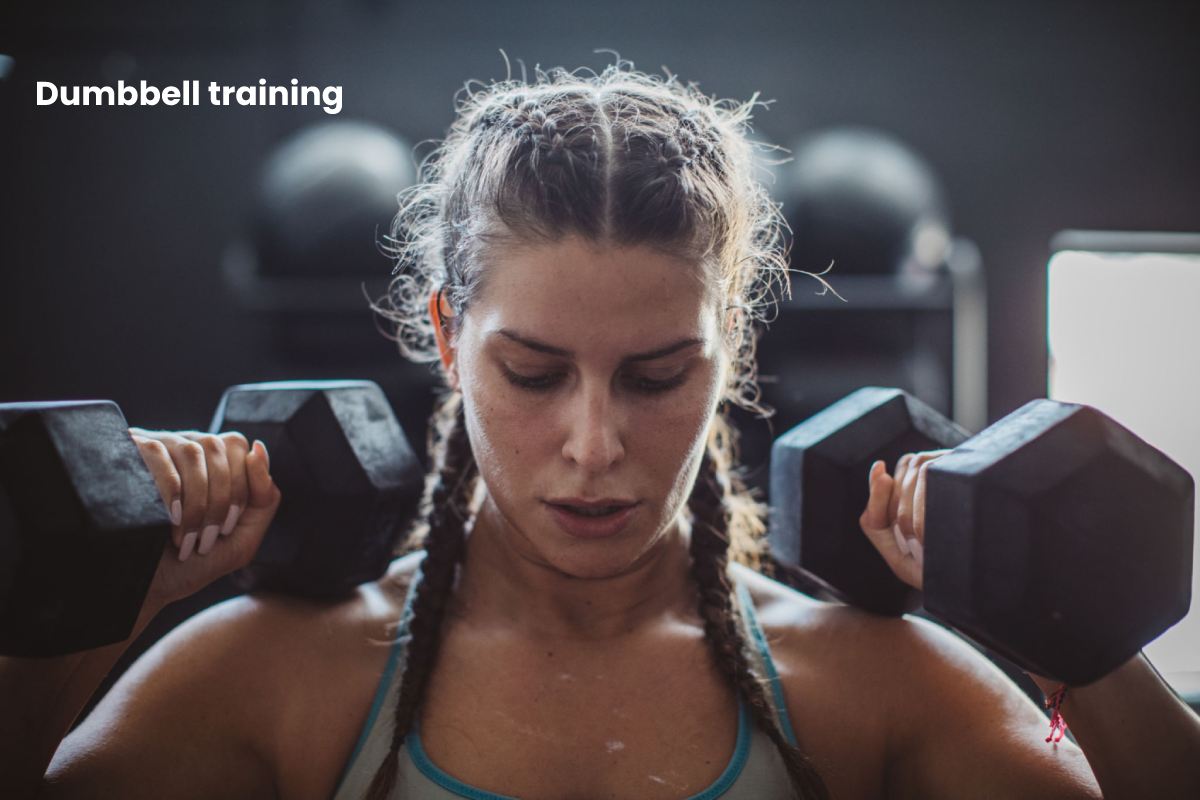Dumbbell Training – You can train your muscles even more effectively than with many conventional training methods with dumbbell training. But beware of rookie mistakes.
Are you motivated because you just started weight training? You press weights, let the muscles burn, you can’t hold on? Stop! Because these are classic mistakes when starting dumbbell training.
The primary purpose of training with weights is to build muscle and strength. Muscles are made up of individual fibers that contract and relax due to stimuli. Using dumbbells sets these stimuli, which is why your body builds muscle. But it would be best if you didn’t overdo it because the muscles grow even with constant training. So here are ten mistakes to avoid.
Table of Contents
1. Start Dumbbell Training Without Instruction
Most gyms have a wide range of free weights. Naturally, it tempts you to reach for the next best dumbbell. But be careful: If you want to benefit from dumbbell training, you shouldn’t simply copy the exercises from the person next to you or try them yourself at random.
To build muscle in a targeted manner, the correct execution of the movement is crucial. In the worst case, you will otherwise injure yourself or suffer poor posture. So instead, let a trainer explain the proper dumbbell training to you.
2. Train Without A Training Plan
Even if you want to see training results quickly, you should not do without a good training plan. It helps you to implement your goals in a focused manner. If you train without a plan, you often skip unloved exercises. However, you must train all muscle groups equally for effective muscle building.
Your training plan is not just a boring instruction but also your motivator. It practically guides you from one exercise to the next; your development becomes visible.
3. Work With Momentum During Dumbbell Training
Even if you’ve had instruction from a trainer at the gym, you may first tend to perform the dumbbell exercises with your bodyweight momentum. However, this gives us less control over the execution of the training, does not train effectively and has a higher risk of injury. Use your muscle power.
4. Always Use The Same Muscles When Training
After a few weeks of training, you will know your favorite exercises. Beginners often tend to do unloved exercises less often. For example, you concentrate on training your upper arms or chest because that’s where the results are quickly visible. However, they leave out their legs.
The result: the often trained muscles get used to the monotonous strain, and the neglected muscles no longer grow. It creates a muscular imbalance. For beginners in particular, however, the whole body must engage. Therefore, make sure to make the dumbbell training as varied as possible.
5. Do Not Vary The Number Of Repetitions
Beginners often believe that high repetitions in dumbbell training have a more significant effect. Several eight to fifteen repetitions per set are sufficient for building muscle. Muscle fatigue is more critical than the number of repetitions. If you only ever do ten reps, muscle growth will stagnate.
So you should vary. If you do fewer reps, you can train with heavier weights. Doing more reps with lightweight builds endurance. Change the rep range every 4 to 6 weeks to train your muscles optimally.
6. Resting Too Long Between Sets
Typing on your smartphone, chatting with your training partner, and watching people keep you from reaching your goal. The breaks between sets are significant in dumbbell training. It allows your muscles to restore their ability to contract. However, if you extend the holidays much further than specified in the training plan, you waste time, and your muscles cool down. The risk of injury increases. Means: Always pay attention to the training plan.
7. Start With Dumbbells That Are Too Heavy
The weight for training your triceps seems too low after the second week? But your training plan is still for four weeks? Keep training anyway. Your muscles first have to get used to the training stimuli. More important than the weight of the dumbbell is that you can perform the movements correctly. Only when this is no longer a problem can you move up to the next weight class.
8. Avoid Barbells
Many beginners always grab the dumbbells and ignore the extended version. But the barbell is also an effective training device for full-body muscle building. It also supports the natural movements of the body. A variation in your training habits will always ensure that you reach your goals sooner – so don’t be afraid of the barbell.
9. Staying In The Studio Forever
Don’t spend hours lifting weights in the gym to get the best strength training. More than 45 minutes are usually not necessary for dumbbell training. So that you don’t get bored, you can set up the training plan with the fitness trainer so that you only train specific muscles on one training day and others on the next training day. The effectiveness of your exercises is more important than the training time.
10. No Recovery Days
If you’ve just started dumbbell training, your motivation is high. But you have to slow yourself down not to hit the weights every day. Because muscles do not grow during training but during the recovery phase. It would be best if you did not use the dumbbells more than three times a week at first.
You can, of course, do endurance training on the rest days. If you take a day off at least once a week, your body can regenerate optimally, and you will benefit from an increase in strength the next time you train with dumbbells.
Conclusion
Weight training is an essential part of every person who works out. Unfortunately, many of us start the workout without having a piece of perfect knowledge. Therefore, it is crucial to have proper guidance to avoid mistakes. The above article provides good detail on the common mistakes.

